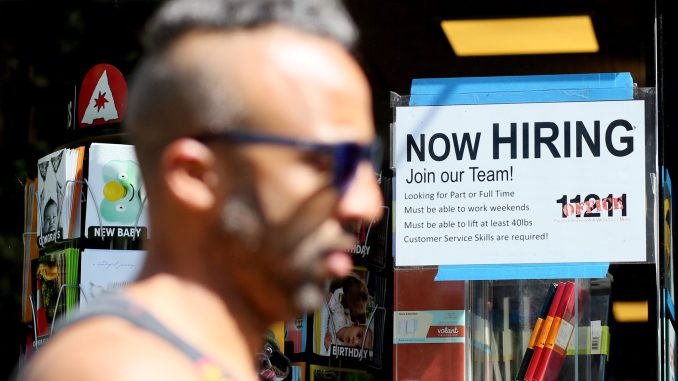
While younger people have been less affected by the COVID-19 virus and have even benefitted from some of the pandemic’s effects on the economy, they haven’t been spared the costs of rising prices. And younger Americans will bear the greatest consequences of the government spending spree that’s propelling inflation.
Destructive policies have hit all ages and income levels. Energy restrictions, trillions of dollars in government spending, COVID-19 restrictions that discouraged work and over-stimulated demand, and the surge in debt—half of which was financed by the Federal Reserve—have contributed to the erosion in Americans’ standards of living.
But there have been some differences in how rising prices affect younger and older people.
For starters, younger Americans save little and spend much. On the one hand, that means they haven’t lost out on plummeting savings and investments caused by the decline in the stock market and inflation’s 8.5% cut into the value of savings and investments over the past year.
However, since younger people spend more of their incomes, they have less cushion in their budgets to accommodate rising prices. And the cost of the things they spend their money on has risen disproportionately.
Over the past year, rent for a median one-bedroom apartment climbed 12.3%, new car prices rose 11.7%, airline fares increased 27.7%, health insurance rose 20.6%, and the cost of food at home rose 13.1%.
One thing that hasn’t outpaced overall inflation is tuition costs, which were up only 2.4% over the past year—less than a third of the 8.5% inflation rate. And some schools have frozen tuition altogether. But only about 30 percent of Americans pursue a 4-year college degree, and that figure may be declining as undergraduate college enrollment is down 9.4% since before the pandemic.
What about young workers? They’ve benefitted disproportionately from the tight labor market where nearly two job openings exist for every unemployed worker. And since switching jobs tends to result in higher income gains and young people have fewer things tying them to their current job or location, they’ve achieved outsized wage gains.
According to the Federal Reserve Bank of Atlanta, median hourly wages for all workers increased 5.5% over the past year, but wages for young workers ages 16 to 24 surged 12.8%.
While the average worker has become $1,900 poorer over the past year as inflation erased all of their wage gains and then some, younger workers’ wages outpaced inflation.
That’s great for young people who are working, but young workers ages 20 to 24 account for the second largest decline in employment since the pandemic (second only to workers ages 65 and older). Failure to gain work experience early in one’s career can have significant consequences for future earnings.
And the tide could soon turn for young workers’ prospects in the job market. Research shows that earnings potential for Americans who graduate during a recession is diminished for 10 to 15 years. After two quarters of negative growth in gross domestic product, it’s highly likely that the U.S. is entering a recession.
Perhaps the most important—though not yet recognized—facet of today’s economy for younger Americans is the tremendous debt that’s been placed upon them through roughly $8 trillion in new government spending since the pandemic began.
On top of already unsustainable federal debt, this new spending will undoubtedly reduce younger Americans’ future incomes and opportunities.
When today’s 20-year-olds were born in 2002, each American’s share of the public debt was $21,210. Today, that figure is $71,836. By the time those 20-year-olds are 45, their share of the debt will be $275,992.
Considering the high probability of either a financial crisis and/or a fiscal reckoning before today’s young workers hit the middle of their careers, they will inevitably have lower incomes and pay higher taxes than if policymakers had been more fiscally responsible. Moreover, if America inflates its way out of unsustainable debt, today’s young workers will not only face lower incomes and higher taxes, but also higher prices and erosion of their life’s savings and investments.
As much as inflation is hurting nearly everyone today, sustained high inflation will be even worse in the long run.
Instead of doubling down on government spending and government intervention that’s added to inflation, policymakers should help expand more affordable alternative education options, reduce barriers to work and to rising incomes, eliminate needless regulations that drive up costs and restrict employment and income growth, and get America’s fiscal house in order so that younger workers aren’t burdened by the equivalent of a second mortgage.
Have an opinion about this article? To sound off, please email letters@DailySignal.com and we’ll consider publishing your edited remarks in our regular “We Hear You” feature. Remember to include the url or headline of the article plus your name and town and/or state.

